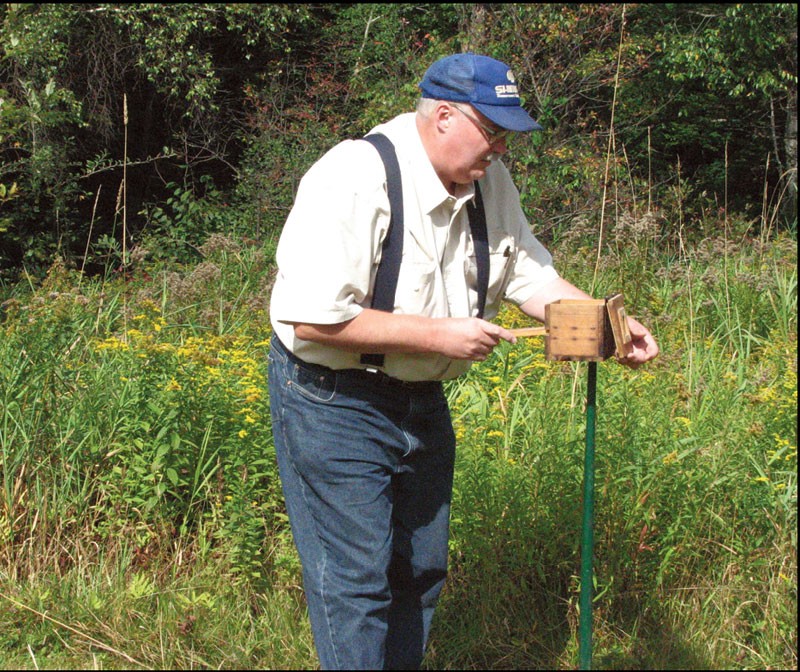
The plight of bees has been a hot news topic over the past few years. Scientists are still exploring a number of theories to explain why pollinator populations are crashing; it could be chemicals, parasites, stress, lack of genetic diversity, or some other factor. Whatever the cause, pollinators of all stripes – including native and non-native, feral or managed, honeybees or bumblebees – are rapidly declining worldwide.
The question of why populations decline is a big one in ecology. Scientists have a hard time parsing out whether a species’ behaviors or other traits are the cause of, or the consequence of, a decline.
One way to sort out cause and effect is to study a species, and its characteristics, before it starts to decline. This would normally entail a long period of study for unrelated reasons, with the curveball of a population decline thrown in at some point along the way.
Sometimes, though, scientists can study a species retroactively. This is what David Kleijn and his colleagues from the Centre for Ecosystem Studies in the Netherlands did with collections of bumblebees stored in natural history museums.
Kleijn knew that previous studies had described a parallel decline in bees and in insect-pollinated plants over the last few decades. However, he thought it was curious that a few species of bumblebees – Bombus pascuorum and B. terrestris – have remained abundant, while species that are ecologically similar – B. ruderatus and B. sylvarum – have experienced dramatic declines in England, Belgium, and the Netherlands, which is Kleijn’s study area.
Other scientists have hypothesized that the now-rare species are very picky about which plants they visit, and that those plants are different from plants preferred by abundant bees. To test this hypothesis, Kleijn studied the pollen found on museum specimens of ten species of bumblebees that were all abundant when they were collected, in the early 1900s. Five of the ten species are now extremely rare in the study area, and the other five have maintained stable populations.
Kleijn then visited the areas where the ten species were collected and sampled the pollen that the stable populations collect now (the declining populations had gone locally extinct), to determine which plants they’re visiting and learn whether those plants differ from plants visited in the early 1900s.
The researchers found that the declining bee species collected pollen from fewer and more specific plants than did the stable species – a restriction perhaps imposed by dietary requirements of the larvae. And the range of those preferred plant species, it turns out, has declined significantly more than the range occupied by plants that stable bees prefer, mostly due to changes in land use.
These results support the hypothesis that the bee populations in decline use a smaller number of plant species than stable bees, a selectiveness that makes them vulnerable when those plants decline – which is exactly what happened to the species in Kleijn’s study. The study also reveals that the stable bees not only used more plant species – ones that happened to become more abundant over the course of the twentieth century – but also that they were able to exploit newly abundant plant resources (especially the invasive ornamental jewelweed) as they became available.
All bee populations, stable and declining, partook liberally of agricultural cover crops in the early 1900s. Crops like clover were used by farmers to enrich their soil, but that practice was eventually phased out by large-scale farms that favored chemical fertilizer over biomass, leaving fewer flowers in the fields. Interestingly, the authors note that “declining bumblebees currently persist only in the few remaining areas that still resemble the historic countryside.”


Discussion *